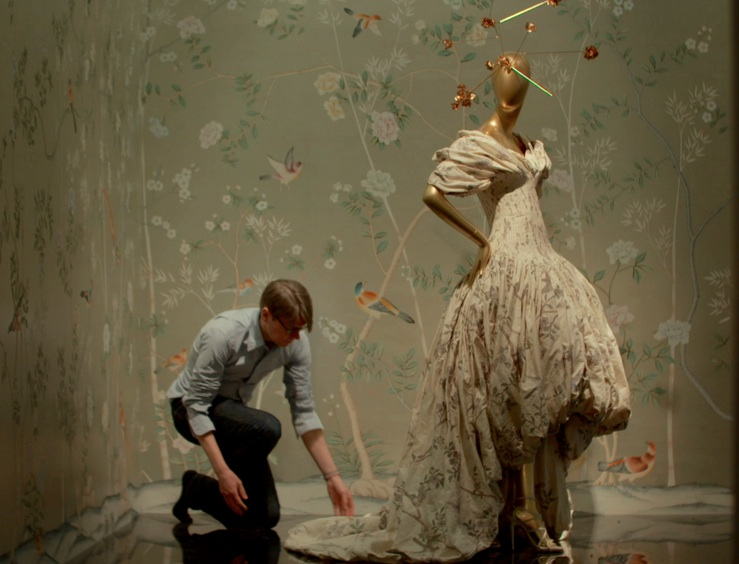|
Sweet Bean (2016)Director: Naomi Kawase Stars: Masatoshi Nagase, Kirin Kiki, Kyara Uchida MPAA: Not Rated yet Running Time: 113 minutes Language: Japanese with English subtitles IMDb link The theme of “unlikely friendships” in a film may be over used and sometimes used ineffectively, but for Sweet Bean it’s appropriate, effective and welcome. Sweet Bean is a delicious red bean paste, the heart of the dorayaki pancakes of Japan and the thing that brings the film’s main characters together. When the troubled, 30-something manager (Sentaro) of a dorayaki/pancake stall is approached by a somewhat disabled and disfigured elderly woman (Tokue) looking for work, he is dismissive, assuming the work would be too taxing for her. She is persistent, but not pushy, sweetly asserting her life long desire to work at such a humble shop, cooking and creating. Even offering to work for half the wages, does little to sway Sentaro. Initially firm in his decision, he relents after she returns with a sampling of her homemade sweet bean paste and with the encouragement of a young local student who frequents the shop. Tasting is believing, and Sentaro offers her a place in his one-man show, with a small but loyal customer base. Her perfect painstakingly made paste, ignites a large word-of-mouth following giving an undeniable boost to the business.
Although fast friends with few words, Sentaro and Tokue do not know each other’s history and secrets. He is a skilled cook with no enthusiasm for cooking, running a business or living life, indebted to the owners; she a happy-go-lucky woman seemingly unaffected by her ailment that dates back to a traumatic childhood. Despite this, she always takes time to revel in small things like cherry blossoms, birds and the sadness of Sentaro. Eventually, word gets out of Tokue’s illness, driving the patrons away and Tokue back to obscurity. The once detached manager ponders his situation of debt and loss, and is determined to find his friend. Everything about Sweet Bean is understated. It’s poignant, without being the least bit sappy. It’s about how seemingly insignificant relationships can matter the most if you listen and let them in. It’s about how encouragement and knowledge can come from unlikely sources. That’s a theme in life and movies that never gets old.
0 Comments
 Director: Andrew Rossi Stars: Andrew Bolton, Anna Wintour, Ang Lee Run Time: 90 min MPAA Rating: PG-13 No doubt, the documentary “The First Monday in May” will draw comparisons to “The September Issue,” although done by different directors. Besides probably drawing some of the same audience, both feature fashion, Vogue magazine and its editor, Anna Wintour. But that’s pretty much where the similarities end. Where “The September Issue” ( R. J. Cutler) takes a journey into the creative process in putting out the famed, gigantic annual Vogue publication, “The Fist Monday in May” gives a behind the scene look into two of New York’s heralded cultural events: The Costume Institute of the Metropolitan Museum of Art’s fashion exhibit, “China: Through The Looking Glass,” and The 2015 Met Gala, a star-studded fundraiser that celebrates the opening of this special exhibit. The latter seems like the making of fanciful and thrilling fare, but in actuality, that is not the case.
“The September Issue” surprisingly and wonderfully ended up with Vogue’s art director, Grace Coddington stealing the show while tensions mounted on several fronts leading to the publication’s fall release. This created an undeniable compelling and appealing film. Not exactly the dynamic duo, “The First Monday,” director Andrew Rossi focuses on the characters of Anna Wintour, long time chair of the Met gala who’s always been known for having a cool and controlled demeanor (is it her ever present cup of Starbuck’s coffee?), and Andrew Bolton, The Costume Institute’s affable, phlegmatic curator. Secondary characters include the many beautiful visuals in the form of haute couture gowns and alluring created spaces at the Met. All pleasing and easy to watch, but the film does not necessarily offer much in the way of tension and excitement leading up to the big events. That being said, in going behind the scenes of the gala production, Rossi did obtain access where none others have before, and the story does present interesting issues, pertaining to fashion as art. Maybe even more significant an issue raised for the gala was the delicate balance of showcasing Eastern history and culture through Western sensibilities, without bumping into gawdy and offensive. To help navigate those delicate waters, filmmaker Wong Kar-Wai (“In the Mood for Love,” “Chungking Express”) was enlisted as the gala’s artistic director. Thanks to him and others, life-sized decorative dragons were not installed at the gala entry way (a bit too heavy handed on the Eastern world reference), and Buddahs were not in the same room of the museum as photos of dictator Mao. Mr. Wong was quick to pointed out, that while that may be aesthetically appealing, it’s culturally inappropriate and historically inaccurate. Did the exhibit pull off this delicate balance? Can or should fashion be seen as art? After viewing “The First Monday in May,” many will probably say yes, and the fact that the exhibit went on to be the most attended fashion exhibit in the history of The Costume Institute of the Met, might confirm that. Is The First Monday in May a compelling and noteworthy documentary? Maybe not so much in a general sense, but for those who love strolling along the intersection of fashion and art, it’s definitely worth checking out. |
AuthorPaula Farmer. Archives
June 2024
Film |



 RSS Feed
RSS Feed